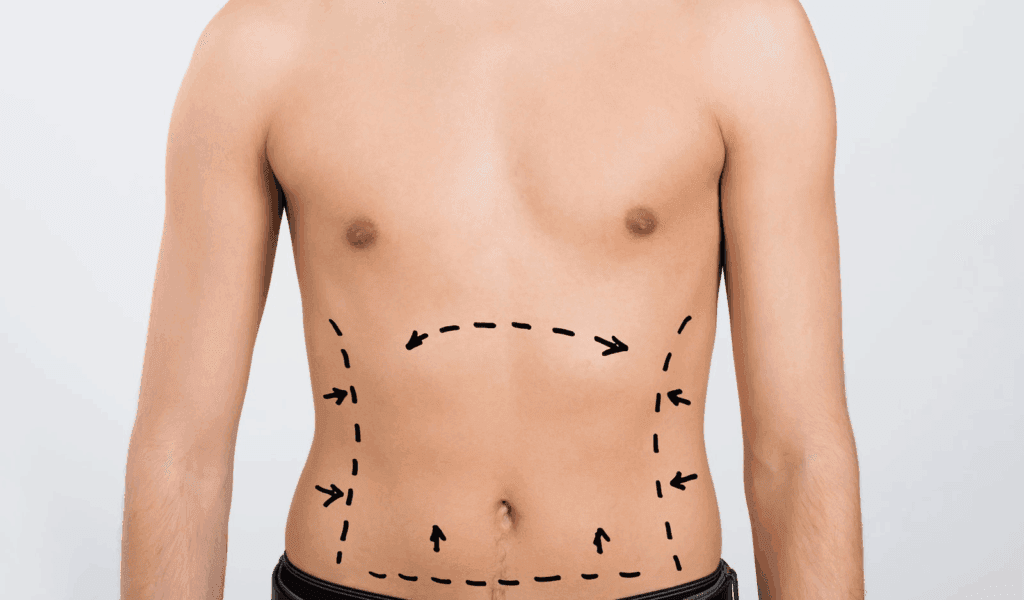Considering surgical body contouring to achieve your dream physique? While procedures like liposuction, tummy tucks, and arm lifts can deliver transformative results, it’s crucial to understand the potential risks and complications involved. According to the American Society of Plastic Surgeons, over 250,000 body contouring procedures are performed annually, but not all patients are fully aware of the risks.
In this comprehensive guide, we’ll explore:
- The common risks associated with body contouring surgeries.
- Procedure-specific complications for liposuction, tummy tucks, arm lifts, and more.
- How to minimize risks and ensure a safe recovery.
- What to do if complications arise post-surgery.
By the end of this article, you’ll be equipped with the knowledge to make an informed decision about your body contouring journey. Let’s dive in!
İçindekiler
1. Common Risks Across All Body Contouring Surgeries
1.1. General Surgical Risks
All surgical procedures, including body contouring surgeries, carry inherent risks. These include:
- Anestezi Riskleri: Allergic reactions, respiratory issues, or complications from anesthesia.
- Enfeksiyon: Risk of bacterial infections at incision sites or internally.
- Bleeding and Hematoma: Excessive bleeding during or after surgery, leading to blood collection under the skin.
- Yara izi: Visible scars, which may fade over time but can be permanent.
- Kötü Yara İyileşmesi: Delayed healing or wound separation, especially in smokers or individuals with poor circulation.
| Risk | Tanım | Prevention and Management |
|---|---|---|
| Anesthesia Risks | Allergic reactions, respiratory issues, or complications from anesthesia. | Pre-operative health evaluation, experienced anesthesiologist. |
| Enfeksiyon | Bacterial infections at incision sites or internally. | Antibiotics, sterile surgical environment, proper wound care. |
| Bleeding and Hematoma | Excessive bleeding during or after surgery, leading to blood collection under the skin. | Pre-operative blood tests, careful surgical technique, post-operative monitoring. |
| Yara izi | Visible scars, which may fade over time but can be permanent. | Proper incision placement, silicone sheets, laser treatments. |
| Kötü Yara İyileşmesi | Delayed healing or wound separation. | Avoid smoking, maintain good nutrition, follow post-op care instructions. |

1.2. Patient-Specific Risks
Certain factors can increase the likelihood of complications:
- Pre-existing Medical Conditions: Diabetes, heart disease, or autoimmune disorders can heighten risks.
- Sigara içmek: Impairs healing and increases the risk of complications.
- Obesity: Higher BMI can lead to increased surgical risks and poorer outcomes.
- İlaçlar: Blood thinners or certain supplements can increase bleeding risks.
Pro Tip: Always disclose your full medical history and current medications to your surgeon during your consultation to minimize risks.
2. Procedure-Specific Risks and Complications
2.1. Liposuction Risks
Liposuction is one of the most common body contouring procedures, but it comes with its own set of risks:
- Contour Irregularities: Uneven fat removal leading to lumps or dents.
- Fluid Accumulation: Seromas (fluid buildup) under the skin.
- Uyuşma: Temporary or permanent numbness in treated areas.
- Skin Necrosis: Rare but serious complication where skin tissue dies due to poor blood supply.
| Risk | Tanım | Prevention and Management |
|---|---|---|
| Contour Irregularities | Uneven fat removal leading to lumps or dents. | Experienced surgeon, proper technique, post-op massage. |
| Fluid Accumulation (Seromas) | Seromas (fluid buildup) under the skin. | Drainage tubes, compression garments, follow-up visits. |
| Numbness | Temporary or permanent numbness in treated areas. | Nerve-sparing techniques, time for recovery. |
| Skin Necrosis | Skin tissue death due to poor blood supply. | Avoid excessive fat removal, proper surgical planning. |
For more details on liposuction, visit our Complete Guide to Liposuction.
2.2. Tummy Tuck (Abdominoplasty) Risks
A tummy tuck involves more extensive tissue manipulation, leading to higher risks:
- Blood Clots: Deep vein thrombosis (DVT) or pulmonary embolism (PE).
- Poor Scarring: Visible scars that may not fade well.
- Skin Loss: Rare but serious complication where skin does not heal properly.
- Muscle Damage: Injury to abdominal muscles during repair.
| Risk | Tanım | Prevention and Management |
|---|---|---|
| Blood Clots (DVT/PE) | Deep vein thrombosis or pulmonary embolism. | Early mobilization, compression stockings, blood thinners if needed. |
| Poor Scarring | Visible scars that may not fade well. | Proper incision placement, silicone sheets, laser treatments. |
| Skin Loss | Skin does not heal properly, leading to tissue death. | Avoid excessive tension on skin, proper surgical technique. |
| Muscle Damage | Injury to abdominal muscles during repair. | Experienced surgeon, careful muscle repair techniques. |
2.3. Arm Lift (Brachioplasty) and Thigh Lift Risks
Arm lifts and thigh lifts focus on skin removal and tightening, with risks including:
- Visible Scars: Scars may be noticeable, especially in the inner arms or thighs.
- Lymphedema: Swelling due to lymphatic fluid buildup.
- Asimetri: Uneven contouring or skin tightening.
- Nerve Damage: Temporary or permanent numbness or tingling.
| Risk | Tanım | Prevention and Management |
|---|---|---|
| Visible Scars | Scars may be noticeable, especially in the inner arms or thighs. | Proper incision placement, scar revision techniques. |
| Lymphedema | Swelling due to lymphatic fluid buildup. | Compression garments, lymphatic drainage massage. |
| Asimetri | Uneven contouring or skin tightening. | Experienced surgeon, meticulous planning. |
| Nerve Damage | Temporary or permanent numbness or tingling. | Nerve-sparing techniques, time for recovery. |
Pro Tip: Always choose a board-certified surgeon with extensive experience in body contouring to minimize risks and achieve optimal results.

3. Minimizing Risks and Ensuring a Safe Recovery
3.1. Pre-Operative Measures
Taking the right steps before surgery can significantly reduce risks:
- Choose a Qualified Surgeon: Ensure your surgeon is board-certified and experienced in body contouring.
- Pre-Operative Health Evaluation: Complete blood tests, EKG, and other evaluations as recommended.
- Avoid Smoking and Alcohol: Stop smoking at least 4-6 weeks before surgery and avoid alcohol.
- Follow Pre-Op Instructions: Adhere to guidelines on medications, fasting, and hydration.
3.2. Post-Operative Care
Proper post-operative care is crucial for minimizing complications:
- Follow Surgeon’s Instructions: Adhere to guidelines on wound care, medications, and activity restrictions.
- Wear Compression Garments: Helps reduce swelling and supports healing.
- Attend Follow-Up Visits: Regular check-ups to monitor healing and address any concerns.
- Stay Hydrated and Eat Nutritiously: Supports healing and reduces infection risks.
| Care Measure | Importance |
|---|---|
| Follow Surgeon’s Instructions | Ensures proper healing and minimizes complications. |
| Wear Compression Garments | Reduces swelling and supports healing. |
| Attend Follow-Up Visits | Monitors healing and addresses concerns early. |
| Stay Hydrated and Eat Nutritiously | Supports overall recovery and reduces infection risks. |
3.3. Recognizing and Addressing Complications
Knowing the signs of complications can help you seek timely medical attention:
- Signs of Infection: Redness, swelling, warmth, or pus at incision sites.
- Blood Clots: Sudden swelling, pain, or warmth in legs (DVT) or chest pain and shortness of breath (PE).
- Poor Healing: Wounds that reopen or do not close properly.
- Severe Pain: Pain that worsens or does not improve with medication.
Pro Tip: If you experience any unusual symptoms post-surgery, contact your surgeon immediately. Early intervention can prevent serious complications.
4. Psychological and Emotional Considerations
4.1. Managing Expectations
Body contouring surgeries can have a significant impact on your self-esteem and body image. It’s important to:
- Set Realistic Goals: Understand that while surgery can enhance your appearance, it may not achieve perfection.
- Prepare for Recovery: Recovery can be emotionally challenging; patience is key.
- Seek Support: Talk to friends, family, or a therapist if needed.
4.2. Body Dysmorphia and Mental Health
Some individuals may experience body dysmorphia or dissatisfaction post-surgery. Consider the following:
- Consult a Mental Health Professional: If you have a history of body image issues, seek guidance before and after surgery.
- Avoid Comparing Results: Every body heals differently; focus on your progress.
- Give Yourself Time: It can take months to see final results and adjust to your new appearance.
Pro Tip: A positive mindset and realistic expectations are crucial for a satisfying surgical experience. Consider counseling if you struggle with body image issues.
Conclusion: Making an Informed Decision
Key Takeaways
- Body contouring surgeries like liposuction, tummy tucks, and arm lifts carry risks, including infection, bleeding, scarring, and procedure-specific complications.
- Choosing a qualified surgeon and following pre- and post-operative care instructions can significantly reduce risks.
- Be aware of psychological and emotional considerations, such as managing expectations and addressing body image issues.
- If complications arise, seek prompt medical attention to ensure the best outcome.
Next Steps
Ready to move forward with your body contouring journey? Here’s what you can do next:
- Research Qualified Surgeons: Look for board-certified professionals with experience in body contouring.
- Schedule a Consultation: Discuss your goals, risks, and expectations with your surgeon.
- Prepare for Surgery: Follow pre-operative guidelines to minimize risks.
- Plan for Recovery: Arrange for post-op care and support during your healing process.
- Ziyaret etmek Cerrahi ekibi: Explore personalized body contouring options and expert guidance tailored to your needs.
Şu anda Cerrahi ekibi, we prioritize your safety and satisfaction. Contact us today to begin your journey toward a more confident and contoured you!
Sıkça Sorulan Sorular (SSS)
1. What are the most common risks of body contouring surgeries?
The most common risks include infection, bleeding, scarring, poor wound healing, and anesthesia complications. Procedure-specific risks may also apply, such as contour irregularities for liposuction or blood clots for tummy tucks.
2. How can I minimize the risks of body contouring surgery?
To minimize risks, choose a qualified surgeon, follow pre- and post-operative instructions, avoid smoking, maintain a healthy lifestyle, and attend all follow-up visits.
3. What should I do if I notice signs of infection after surgery?
If you notice signs of infection, such as redness, swelling, warmth, or pus at the incision site, contact your surgeon immediately for evaluation and treatment.
4. Are the results of body contouring surgeries permanent?
Results can be long-lasting, but maintaining a stable weight and healthy lifestyle is crucial. Significant weight fluctuations or aging can affect your results over time.
5. Can body contouring surgeries affect my mental health?
Yes, body contouring surgeries can impact your mental health. It’s important to set realistic expectations and seek support if you experience body image issues or dissatisfaction post-surgery.
6. How long does recovery take after body contouring surgery?
Recovery times vary by procedure. For example, liposuction may require 1-2 weeks of recovery, while a karın germe may take 2-4 weeks or longer for full recovery.
7. What are the signs of a blood clot after surgery?
Signs of a blood clot include sudden swelling, pain, or warmth in the legs (DVT) veya chest pain and shortness of breath (pulmonary embolism). Seek immediate medical attention if you experience these symptoms.
8. Is it safe to combine multiple body contouring procedures?
Combining procedures can be safe if you are in good health and your surgeon approves. However, it may increase recovery time and risks, so discuss your options thoroughly with your surgeon.
Our Surgeons and Affiliated Professionals
Surgyteam olarak, her biri zengin uzmanlık ve hasta merkezli bakıma bağlılık getiren seçkin bir tıp profesyonelleri ekibiyle işbirliği yapmaktan gurur duyuyoruz.
- Dr. Mehmet Fatih Okyay (Dr. MFO): Plastik, Rekonstrüktif ve Estetik Cerrahi Uzmanı. Surgyteam'in kurucu ortağı. FEBOPRAS sertifikalı.https://www.dr-mfo.com/)
- Dr. Selçuk Yılmaz: Plastik, Rekonstrüktif ve Estetik Cerrahi Uzmanı.https://drselcukyilmaz.com)
- Dr. Ebru Okyay: Dermatoloji Uzmanı. (https://drebruokyay.com/)
- Dr. Mustafa Keleş: Estetik, Plastik ve Rekonstrüktif Cerrahi Uzmanı.https://www.medstar.com.tr/doktorlar/mustafa-keles/)
- Dr. Boray Yücel: Plastik, Rekonstrüktif ve Estetik Cerrahi Uzmanı.https://borayucel.com/)
- Dr. Sibel Atalay: Plastik, Rekonstrüktif ve Estetik Cerrahi Uzmanı. Uluslararası Sağlık Turizmi Yetki Belgesine Sahip Klinik.https://www.sibelatalay.com.tr/)
- Dr. Mert Meral: Plastik, Rekonstrüktif ve Estetik Cerrahi Uzmanı. EBOPRAS sertifikalı.https://mertmeral.com/)
Surgyteam hakkında daha fazla bilgi edinmek ve size nasıl yardımcı olabileceğimizi öğrenmek için lütfen web sitemizi ziyaret edin:
https://surgyteam.com/
Yasal Uyarı: Bu blog yazısı yalnızca bilgilendirme amaçlıdır ve tıbbi tavsiye teşkil etmez. Maliyetler tahminidir ve değişiklik gösterebilir. Kişiselleştirilmiş tavsiye ve tedavi için daima kalifiye bir sağlık uzmanına danışın.



